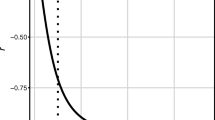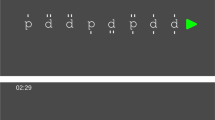Abstract
There have been several anecdotal accounts that cranial electrical stimulation (CES) enhances attention and the ability to learn new tasks in a normal population, but only one published investigation confirms that CES improves attention using the Alpha Stim CES (Madden and Kirsch, 1987). The purpose of this study was to corroborate the findings of Madden and Kirsch, using more precise measures of attention, such as a Continuous Performance Test (CPT). A pretest and posttest CPT was given to two groups using the LISS CES device. The control group consisted of twenty-one subjects who received the placebo treatment. The experimental group of thirty-one subjects received twenty minutes of CES. Four measures of the CPT show significant gains in attention: Number of Hits,p=.010 Hit RT ISI Change,p=.016, Risk Taking,p=.055; and Attentiveness,p=.054. Based on subjects who demonstrated improvement by one standard deviation on two different measures of the CPT, thirty-one percent of the experimental group improved versus four percent of the control group. The use of CES as a method of increasing attention is a promising are that requires further investigation.
Similar content being viewed by others
References
Alling, F., Johnson, B., and Elmoghazy, E. (1990). Cranial Electrostimulation (CES) Use in the Detoxification of Opiate-Dependent Patients.Journal of Substance Abuse Treatment 7:173–180.
Beck, A.T., Steer, R.A., and Brown, G.K. (1996).Beck Depression Inventory Manual. San Antonio, TX: The Psychological Corporation.
Beck, A.T. and Steer, R.A. (1993).Beck Anxiety Inventory Manual. San Antonio, TX: The Psychological Corporation.
Braverman, E., Swartz J., Blum, K., and Moss, B. (1992). Electrotherapy for Addictions.Addiction and Recovery. May–June 34–36.
Brown, C. (1975). Electroanesthesia and electrosleep.American Psychologist 30:402–410.
Cady, R., and Shealy, C.N., Culver-Veehoff, D., Houston, R., Liss, S., Closson, W., and Cox R. (1989). Cerebrospinal Fluid and Plasma Neurochemicals: Response to Cranial Electrical Stimulation. Unpublished study.
Conners, C.K. (1995).Conners’ Continuous Performance Test Computer Program User's Manual. Canada: Multi-Health Systems.
Feighner, J., Brown, S., and Olivier, J. (1973). Electrosleep therapy: A controlled double-blind study.Journal of, Nervous Disorders 157(2):121–128.
Frankel, B., Buchbinder, R., and Snider, F. (1973). Ineffectiveness of electrosleep in chronic primary insomnia.Archives of General Psychiatry 29:563–568.
Gibson, T. and O’Hair, D. (1987). Cranial Application of Low Level Transcranial Electrotherapy vs Relaxation Instructions in Anxious Patients.American Journal of Electronic Medicine, pp. 18–21.
Hutchison, M. (1991).Megabrain. New York: Ballantine Books.
Klawanski, S., Yeung, A., Berkey, C., Nirav, S., Phan, H., and Chalmers, T. (1995). Meta-Analysis of Randomized Controlled Trials of Cranial Electrostimulation.The Journal of Nervous Mental Disease 183(7):478–484.
Liss, S. and Liss, B. (1996). Physiological and Therapeutic Effects of High Frequency Electrical Pulses.Integrative Physiological and Behavioral Science 31(2):88–94.
Logan, M. (1988). Improved Mechanical Efficiency in Cerebral Palsy Patients Treated with Cranial Electrotherapy Stimulator (CES). Unpublished study.
Madden, R. and Kirsch, D. (1987). Low Intensity Transcranial Electrostimulation Improves Learning of a Psychomotor Task.American Journal of Electronic Medicine, pp. 41–45.
Malden, J. and Charash, L. (1985). Transcranial Stimulation for the Inhibition of Primitive Reflexes in children with cerebral palsy.Neurology Report 9(2):33–38.
Medi Consultants, Inc. (no date).LISS Body Stimulator Model SBL-502-B [Product specification sheet]. Paterson, NJ: Author.
Passini, F., Watson, C., and Herder, J. (1976). The effects of cerebral electric therapy (electrosleep) on anxiety, depression, and hostility in psychiatric patients.J. Mental Disorders 163(4):263–266.
Patterson, M., Krupitsky, E., Flood, N., and Baker, D. (1994). Amelioration of Stress in Chemical Dependency Detoxification by Transcranial Electrostimulation.Stress Medicine 10(2):115–126.
Rosenthal, S. and Wulfsohn, N. (1970). Studies of Electrosleep with Active and Simulated Treatment.Current Therapeutic Research 12:126–130.
Routtenberg, A. (1978). The Reward System of the Brain.Scientific America, November.
Schmitt, R., Capo, T., and Boyd, E. (1986). Cranial electrotherapy stimulation as a treatment for anxiety in chemically dependent persons.Alcoholism: Clinical and Experimental Research 10:158–160.
Shealy, C.N., Cady, R., Wilkie, R., Cox, R., Liss, S., and Closson, W. (1989). Depression: A diagnostic neurochemical profile and therapy with cranial electrical stimulation.Journal of Neurological Orthopaedic Medicine and Surgery 10:319–321.
Shealy, C.N., Cady, R., Veehoff D., Houston, R., Burnetti, M., Cox, R., and Closson, W. (1992). The neurochemistry of depression.American Journal of Pain Management 2:13–16.
Smith, R. (1982). Cranial electrotherapy stimulation. In J. Myklebust (Ed.), Neural stimulation. Boca Raton, FL: CRC Press.
Smith, R. and Day, E. (1977). The effects of cerebral electrotherapy on short-term memory impairment in alcoholic patients.International Journal of Addiction 12:575–582.
Smith, R. and Shiromoto, F. (1992). The use of cranial electrotherapy stimulation to block fear perception in phobic patients.Current Therapeutic Research 51(2):249–253.
Smith, R., Tiberi, A., and Marshall, J. (1994). The use of cranial electrotherapy stimulation in the treatment of closed head injured patients.Brain Injury 8(4):357–361.
Solomon, S., Elkink, A., Freitag, F., Gallagher, R.M., Moor, K., Swerdlow, B., and Malkin, S. (1989). Safety and Effectiveness of Cranial electrotherapy in the Treatment of Tension Headache.Headache 29(7):445–450.
Solomon, S. and Guglielmo K. (1985). Treatment of headache by transcutaneous electrical stimulation.,Headache 25:12–15.
Stein, L. and Belluzzi, J. (1975). Memory Enhancement by Central Administration of Norepinephrine.Brain Research 84:329–335.
Waxman, S. and deGroot, J. (1995).Correlative neuroanatomy. Norwalk, CT: Appleton and Lange.
Weintraub, P. (1984).The Omni Interviews. New York: Tiknor, and Fields.
Weiss, M. (1973). The Treatment of Insomnia Through, the use of Electrosleep: An EEG Study.The Journal of Nervous Mental Disease 157:108–120.
Wilson, L. and Childs, A. (1988). Cranial Electrotherapy Stimulation (CES) for Attention to Task Deficit: A Case Study.American Journal of Electromedicine December, pp. 93–99.
Author information
Authors and Affiliations
Rights and permissions
About this article
Cite this article
Southworth, S. A study of the effects of cranial electrical stimulation on attention and concentration. Integrative Physiological and Behavioral Science 34, 43–53 (1999). https://doi.org/10.1007/BF02688709
Issue Date:
DOI: https://doi.org/10.1007/BF02688709




